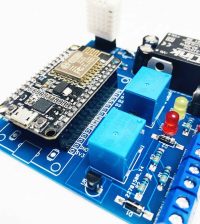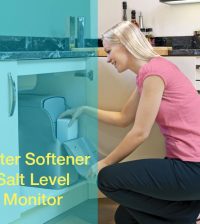- makeITcircular 2024 content launched – Part of Maker Faire Rome 2024Posted 2 weeks ago
- Application For Maker Faire Rome 2024: Deadline June 20thPosted 2 months ago
- Building a 3D Digital Clock with ArduinoPosted 7 months ago
- Creating a controller for Minecraft with realistic body movements using ArduinoPosted 7 months ago
- Snowflake with ArduinoPosted 8 months ago
- Holographic Christmas TreePosted 8 months ago
- Segstick: Build Your Own Self-Balancing Vehicle in Just 2 Days with ArduinoPosted 8 months ago
- ZSWatch: An Open-Source Smartwatch Project Based on the Zephyr Operating SystemPosted 9 months ago
- What is IoT and which devices to usePosted 9 months ago
- Maker Faire Rome Unveils Thrilling “Padel Smash Future” Pavilion for Sports EnthusiastsPosted 10 months ago
How to make an open hardware monitor-like device for your heart
A few weeks ago, my doctor told me to keep an eye on my heart with the help of DIY toolkit BITalino, and I wrote about it in Why my doctor prescribed me open hardware. Although I could keep slapping a bunch of cables and a PCB on me every day, miniaturized physiological computing devices are pretty fun to build and play with—at least for me—so I decided to make myself something more practical.
We thank s much our friend Hugo Silva for creating and explaining this open source cardio-holter monitor project named CubiKG.
Materials: This build started off with a HeartBIT kit, namely an Electrocardiography (ECG) sensor, an accelerometer (optional), an LED (optional), an MCU, a power management module, a Bluetooth module, a 3-lead electrode cable, a few electrodes, and a battery.

Using just the ECG shaves off a few steps from this build; however, this particular version of the device gives you a pretty cool set of measurements with ECG (A1), 3-axis motion data (A2-A4), and battery level (A6). Additionally, it also enables you to do event annotation, whenever you feel something different has happened (e.g., a stronger heartbeat).Connecting O4 to I1 (or another digital input) and O1 to I4 (or another digital input) is actually optional, as you can replicate the purpose via software; however these connections feed the triggering signal directly back to the device, giving you an easier way of storing the annotations together with the recorded data.
The CubiKG Device: This is it, a cube that can sense your heart, motion, and receive your events.
The software used OpenSignals (r)evolution for real-time visualization, recording, and replaying the data once stored. An add-on for Heart Rate Variability (HRV) analysis has recently become available, which greatly facilitates the process of extracting meaningful details from the data (e.g., Figure 3) that may be more easily reviewed by your doctor. Sometimes, it’s more convenient to go mobile (e.g., when roaming around the house or office), in which case, either the BITadroid app by David G. Marquez, or the BITalino DataLogger by Borja Gamecho are pretty handy.
full step by step guide: How to make an open hardware monitor-like device for your heart

















2 Comments